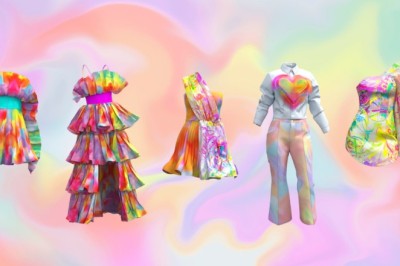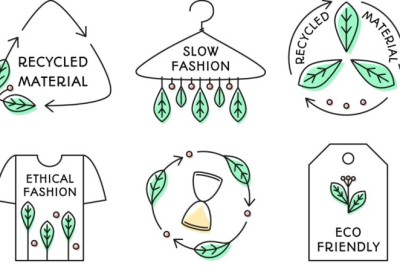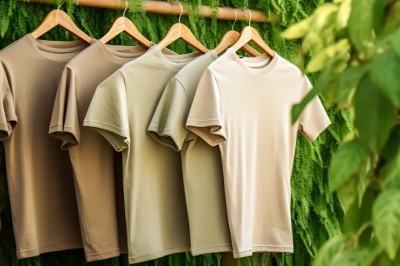views

Sustainable fashion refers to the design, production, and consumption of clothing and accessories in a way that minimizes negative environmental and social impacts. It encompasses practices that aim to reduce waste, pollution, and the exploitation of workers throughout the supply chain. Sustainable fashion also promotes the use of eco-friendly materials, ethical manufacturing processes, and the adoption of circular economy principles, such as recycling and upcycling.
In recent years, the fashion industry has faced increasing scrutiny due to its significant environmental and social footprint. From water pollution caused by chemical dyes to the massive amounts of textile waste ending up in landfills, the negative impacts of fast fashion are becoming more apparent. Moreover, concerns about labor rights violations and unsafe working conditions have also gained attention.
As a result, consumers are increasingly demanding transparency, ethical practices, and sustainable alternatives. Brands and designers are recognizing the need to embrace sustainability as a vital part of their business models to meet these changing consumer expectations and contribute to a more responsible and conscious fashion industry.
Understanding the Environmental Impact of Fashion
The fashion industry has a significant environmental footprint, contributing to various ecological challenges. From the production of raw materials to the manufacturing process and transportation, each stage has profound implications. The fashion industry is known to be resource-intensive, relying heavily on water, energy, and chemicals. Additionally, the fast fashion model, characterized by rapid production and consumption, exacerbates these environmental concerns.
Water pollution is a major issue in the fashion industry due to the discharge of harmful chemicals and dyes into water bodies. It contaminates aquatic ecosystems, disrupts marine life, and affects communities dependent on clean water sources. Textile waste is another pressing concern, as the industry generates a staggering amount of discarded garments and fabric scraps that often end up in landfills, contributing to environmental degradation. Furthermore, fashion's carbon emissions, resulting from production, transportation, and garment care, contribute to climate change and air pollution.
The environmental impact of fashion extends beyond immediate pollution and waste concerns. Ecosystems are affected through deforestation, as the industry relies on raw materials like cotton and leather that require large land areas for cultivation or grazing. Biodiversity loss occurs when natural habitats are converted for fashion-related purposes, threatening various species and ecological balance. Moreover, the use of pesticides and insecticides in crop cultivation can harm wildlife and disrupt ecosystems.
Understanding the environmental impact of fashion is crucial in addressing the industry's sustainability challenges. Efforts towards adopting more sustainable practices and promoting circularity can help minimize these adverse effects and pave the way for a more environmentally responsible fashion industry.
Social and Ethical Considerations in Fashion
Social and ethical considerations in the fashion industry are critical aspects that demand attention. One of the significant concerns is the exploitation of workers within the fashion supply chain. Many garment workers, especially in developing countries, endure low wages, long working hours, and unsafe conditions. This exploitation is often driven by the relentless pursuit of cost reduction and fast production cycles.
Sweatshop labor is a distressing reality within the fashion industry. Workers, including women and children, toil in hazardous environments where their health and well-being are compromised. Lack of proper ventilation, fire safety measures, and protective equipment further exacerbate the risks they face.
Furthermore, human rights violations persist in some fashion supply chains, including forced labor, child labor, and human trafficking. These practices violate basic human rights and must be addressed urgently. Promoting fair trade practices, which ensure that workers are paid fair wages and work in safe conditions, is crucial for fostering a more equitable and ethical fashion industry.
To combat these issues, various stakeholders, including brands, consumers, and policymakers, need to collaborate. Brands should enforce strict codes of conduct and ethical sourcing policies, ensuring transparency and accountability throughout their supply chains. Consumers can support ethical brands and demand transparency, driving the demand for fair and sustainable fashion. Policymakers play a vital role in implementing regulations that protect workers' rights and enforce fair trade practices.
By addressing these social and ethical considerations, the fashion industry can work towards a more sustainable and responsible future, where the well-being and dignity of workers are upheld.
Key Principles of Sustainable Fashion
Reduction of resource consumption
Throughout a garment's whole lifecycle, sustainable fashion seeks to use as few finite resources as possible. This entails implementing practices including efficient production techniques, energy consumption optimization, and water usage reduction. The goal of designers and producers is to make clothing that is strong, versatile, and long-lasting so that customers will buy fewer items and use their clothes for longer.
Use of environmentally friendly materials
Sustainable fashion promotes the use of materials that are eco-friendly and have a lower environmental footprint. This includes organic and natural fibers, recycled materials, and innovative sustainable textiles. By choosing materials that are produced with minimal environmental harm, such as organic cotton or recycled polyester, the fashion industry can reduce pollution, minimize water usage, and decrease reliance on non-renewable resources.
Recycling and upcycling initiatives
Recycling and upcycling are essential aspects of sustainable fashion. Recycling involves converting waste materials, such as post-consumer garments or textile scraps, into new products or materials. Upcycling refers to creatively transforming existing items into new, high-quality products with increased value. These initiatives help reduce textile waste, extend the life cycle of garments, and reduce the need for new production.
Ethical production practices and fair wages
Sustainable fashion promotes ethical production practices, ensuring safe and fair working conditions for all individuals involved in the supply chain. This includes fair wages, reasonable working hours, and the absence of a child or forced labor. By prioritizing ethical practices, the fashion industry can contribute to the well-being and dignity of workers, supporting social sustainability.
By implementing these key principles, sustainable fashion seeks to address the environmental and social challenges associated with the traditional fashion industry, promoting a more responsible and conscious approach to clothing production and consumption.
Benefits of Sustainable Fashion
Sustainable fashion offers a range of benefits that span environmental, social, and economic aspects. Firstly, sustainable fashion contributes to reducing pollution. Traditional fashion practices generate significant pollution through chemical-intensive manufacturing processes and the release of toxic substances into waterways.
By adopting sustainable practices such as using organic or recycled materials, implementing eco-friendly production methods, and reducing waste, the fashion industry can minimize its environmental footprint and mitigate pollution.
Secondly, sustainable fashion promotes the conservation of resources. The fashion industry is known for its high consumption of water, energy, and raw materials. Sustainable fashion aims to minimize resource usage by encouraging recycling, upcycling, and extending the lifespan of garments. By embracing circular economy principles, the industry can reduce the strain on natural resources, lower energy consumption, and decrease waste generation.
On the social front, sustainable fashion supports improved working conditions. Ethical and sustainable fashion brands prioritize fair labor practices, ensuring that workers receive fair wages, have safe working conditions, and are free from exploitation.
Additionally, sustainable fashion promotes fair trade practices, fostering partnerships with artisans and producers in developing countries, empowering marginalized communities, and contributing to poverty reduction.
Lastly, sustainable fashion offers economic benefits by fostering innovation and market growth. It drives the development of new technologies, materials, and production methods, stimulating creativity and pushing the boundaries of design.
By responding to growing consumer demand for sustainable options, the fashion industry opens up new markets and attracts environmentally and socially conscious customers. This in turn encourages market competition, drives investment, and ultimately fuels economic growth.
Role of Consumers in Driving Change
Conscious consumption and responsible buying habits
Consumers play a crucial role in driving change through conscious consumption and responsible buying habits. This involves being aware of the social and environmental impact of the products they purchase and making informed choices.
By considering factors such as production methods, labor conditions, and the use of sustainable materials, consumers can support companies that align with their values and contribute positively to society. By opting for products that are ethically produced and environmentally friendly, consumers send a powerful message to businesses, encouraging them to adopt more responsible practices.
Demand for transparency and ethical brands
Today's consumers are becoming more and more demanding of brands. They are interested in the origins, processes, and principles upheld by the businesses they support. A surge in ethical brands that place a premium on fair trade, ecologically responsible behavior, and social responsibility might be attributed to this need for openness. Customers may influence change by encouraging businesses to be more transparent and accountable for their actions by choosing to purchase from these firms and keeping others accountable.
Supporting local and sustainable fashion businesses
Consumers can also drive change by supporting local and sustainable fashion businesses. By choosing to buy from local designers and artisans, consumers contribute to the growth of local economies and reduce their carbon footprint by minimizing transportation emissions.
Additionally, supporting sustainable fashion businesses that prioritize ethical sourcing and production methods helps promote a shift towards a more sustainable and responsible fashion industry. Consumers have the power to encourage the growth of these businesses, creating a demand for sustainable fashion and pushing larger brands to adopt more environmentally friendly practices.
Fashionnex Final Words
In conclusion, sustainable fashion is of utmost importance in today's world. It encompasses the need to protect our environment, promote ethical practices, and ensure the well-being of workers. By embracing sustainable fashion, we can reduce the carbon footprint, conserve natural resources, and mitigate the detrimental effects of the fashion industry.
To bring about positive change, we need a collective effort from individuals, businesses, and policymakers. As individuals, we can make conscious choices by opting for eco-friendly and ethically produced garments, practicing mindful consumption, and supporting brands that prioritize sustainability. Businesses have a crucial role to play by adopting sustainable practices throughout their supply chains, investing in innovative and eco-friendly technologies, and promoting transparency. Policymakers should enact and enforce regulations that incentivize sustainability, promote circular economy models, and encourage industry-wide accountability.
Together, we can drive the transformation of the fashion industry towards a more sustainable future. Let us all take action today, embracing sustainable fashion as a responsibility towards the planet and the generations to come.











Comments
0 comment